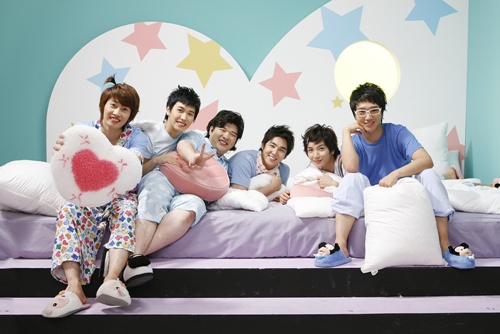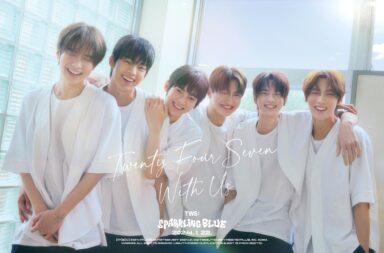Subgroups are everywhere in K-pop these days. When I first found out about the existence of subgroups back in 2009 when exploring Super Junior for the first time, I was utterly confused: “So you’re telling me that entertainment companies now pick select members and place them in smaller groups with certain members and call themselves something different? But I can’t even get the names of the members in the main group straight yet! What’s the point of this?”
Super Junior’s four subgroups were relatively easy to sort out though; SuJu-M focused on Chinese fans, SuJu K.R.Y. cranked out beautiful ballads, SuJu-T attempted to make trot music trendy again, and well… I’m still a little hazy on the existence of SuJu-Happy but I’m going to take a wild guess and say that their purpose is to appear happy (although the overusage of pastel-colored clothing drives me a little crazy when watching their MVs.)
If you’re still a little confused on what a subgroup actually is from my vague explanation, it’s when certain members from the same group form a smaller unit that performs original music and embraces a new concept. To be honest, I’ve never really paid much attention to subgroups. In fact, there aren’t even very many subgroups I actually enjoy listening to. I just didn’t see the point in picking out a few members of a group and having them form a completely new group with a completely new concept. From my point of view, it just seemed unfair. Members of a group already get uneven coverage and ultimately some members will become more popular than others, so why worsen the problem?
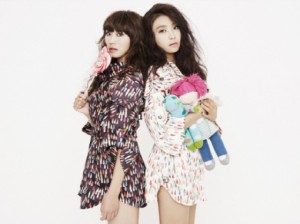 But even with my complaints about the subgroup system, I quickly noticed the benefits of having subgroups within a group. SISTAR, for example, used the subgroup technique to draw in a larger fanbase to a relatively new group with their subgroup SISTAR19. Hyorin‘s strong vocals and Bora‘s rapping prowess matched perfectly together in their explosively popular single Ma Boy, complete with some serious body waves in the choreography( by the way, has anyone actually tried to learn the dance for that song? It’s hard!) Although the creation of SISTAR19 has significantly increased Hyorin and Bora’s popularity, the other two members have been abandoned to some degree by some fans. It’s less work for them, of course, but who wants to be known as “the other member”? Luckily for them, SISTAR looks like they’re pretty determined to stick with whole-group activities and promotions for songs from now on with their momentum and potential to become an immensely popular girl group building.
But even with my complaints about the subgroup system, I quickly noticed the benefits of having subgroups within a group. SISTAR, for example, used the subgroup technique to draw in a larger fanbase to a relatively new group with their subgroup SISTAR19. Hyorin‘s strong vocals and Bora‘s rapping prowess matched perfectly together in their explosively popular single Ma Boy, complete with some serious body waves in the choreography( by the way, has anyone actually tried to learn the dance for that song? It’s hard!) Although the creation of SISTAR19 has significantly increased Hyorin and Bora’s popularity, the other two members have been abandoned to some degree by some fans. It’s less work for them, of course, but who wants to be known as “the other member”? Luckily for them, SISTAR looks like they’re pretty determined to stick with whole-group activities and promotions for songs from now on with their momentum and potential to become an immensely popular girl group building.
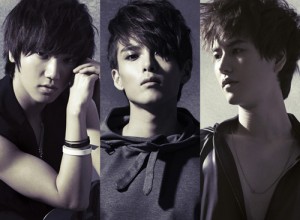 I also like to think that some groups have subgroups to remind us that they really do have talent in their ranks as well. I may be the only one, but every single time Super Junior comes out with an overly electronic-sounding single, I go off after listening to it for an hour or so and find some of Super Junior K.R.Y.’s stuff to remind me that the boys aren’t all robots. I’m convinced that the combination of Kyuhyun, Ryeowook, and Yesung‘s voices can melt almost anyone. Every single time I hear one of their songs or see one of their performances, all of the bad electronic singles are forgiven.
I also like to think that some groups have subgroups to remind us that they really do have talent in their ranks as well. I may be the only one, but every single time Super Junior comes out with an overly electronic-sounding single, I go off after listening to it for an hour or so and find some of Super Junior K.R.Y.’s stuff to remind me that the boys aren’t all robots. I’m convinced that the combination of Kyuhyun, Ryeowook, and Yesung‘s voices can melt almost anyone. Every single time I hear one of their songs or see one of their performances, all of the bad electronic singles are forgiven.
And then there’s a group like Orange Caramel, which just completely baffles me. Sure, I love After School and especially Lizzy (she’s just too adorable for words, even when prancing around in an overly shiny leotard with an uncomfortable-looking Lee Joon). But I’m not really sure what direction the subgroup is supposed to be going in–cutesy? Tacky? Just flat-out weird? In all honesty, I much prefer the fierce, stage-owning, amazing-dance-move-executing After School over the sticky sweetness of Orange Caramel. I get that Orange Caramel is trying to appeal to fans who prefer the cute concept over the sexy concept, but I feel like the company could have executed the transition from sexy to cute a little more smoothly. However, I respect that they are targeting a new fanbase and exploring a different type of music, so I don’t really have too much of a problem with them. I also like that unlike some subgroups, they consistently put out new material.
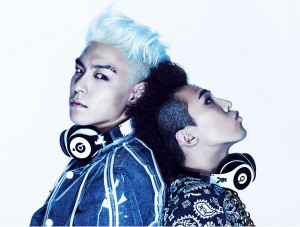 One subgroup that has definitely been successful in their attempts to appeal to wider range of fans is GD&TOP. Composed of Big Bang members G-Dragon and TOP, the group takes the stage by storm with fantastic numbers that showcase their rapping talents. Big Bang is widely recognized for Daesung and Taeyang‘s awesome vocals, so I thought it was brilliant to give the two rappers of the group a chance to shine too (not that they don’t already.) I feel like with YG, instead of trying to expand Big Bang’s fanbase, they’re allowing G-Dragon and TOP to hone their talents and become more independent artists. I like that a lot–most entertainment companies try very hard to make their artists highly dependent on them so it’s hard for the artists to gain leverage when negotiating contract extensions and things they may want to explore.
One subgroup that has definitely been successful in their attempts to appeal to wider range of fans is GD&TOP. Composed of Big Bang members G-Dragon and TOP, the group takes the stage by storm with fantastic numbers that showcase their rapping talents. Big Bang is widely recognized for Daesung and Taeyang‘s awesome vocals, so I thought it was brilliant to give the two rappers of the group a chance to shine too (not that they don’t already.) I feel like with YG, instead of trying to expand Big Bang’s fanbase, they’re allowing G-Dragon and TOP to hone their talents and become more independent artists. I like that a lot–most entertainment companies try very hard to make their artists highly dependent on them so it’s hard for the artists to gain leverage when negotiating contract extensions and things they may want to explore.
Entertainment companies create subgroups for all kinds of reasons, but mostly they take artists from groups they think have potential to expand the overall group’s fanbase and allow them to head off in a new direction in terms of K-pop. I think subgroups are a genius idea when considered as tools for popularity expansion and giving the main group another dimension, but when subgroups go awry, it can get relatively messy.
What about you? Which subgroups do you dig and which ones do you just wish would just drop off the K-pop scene?
